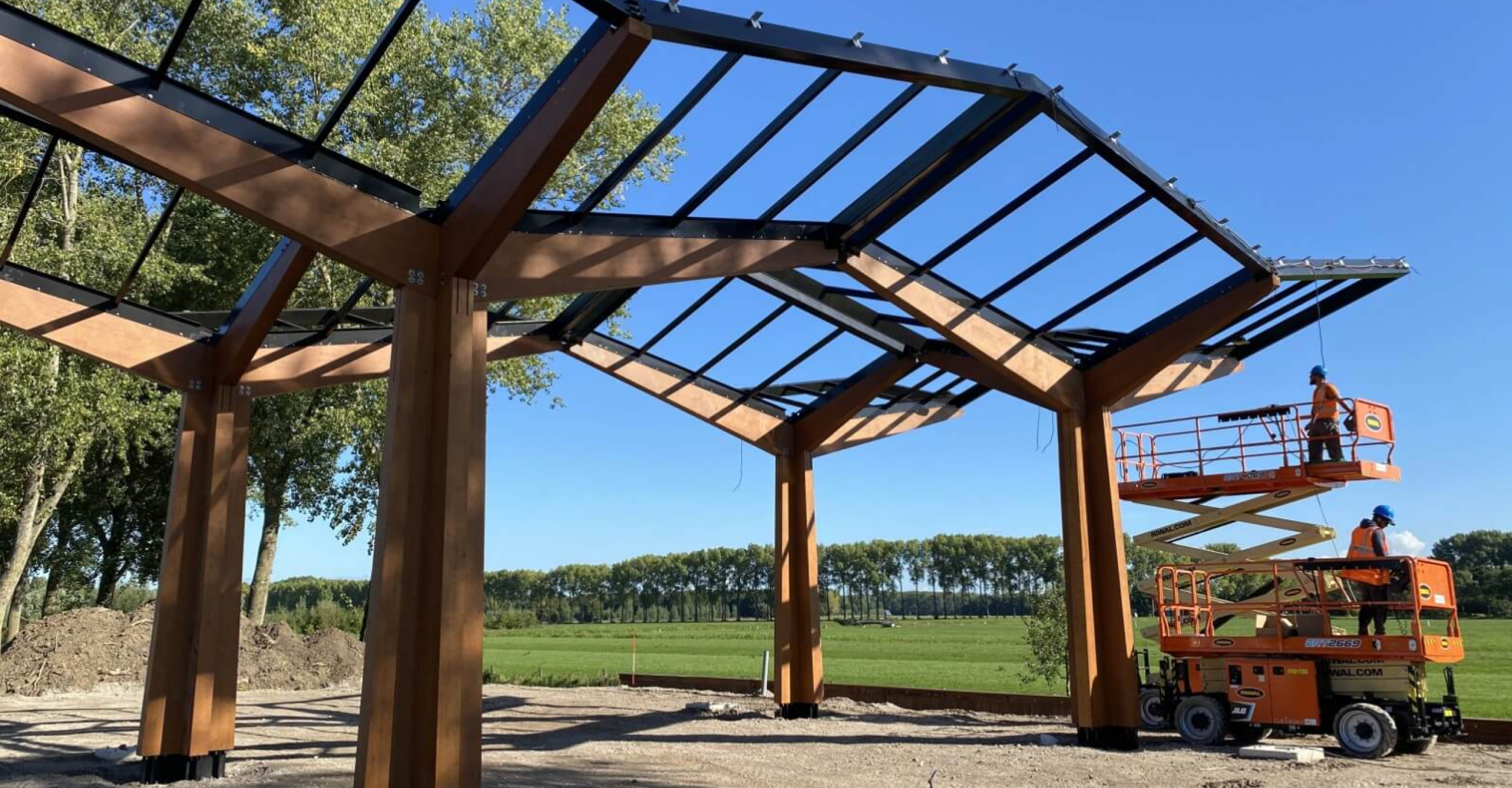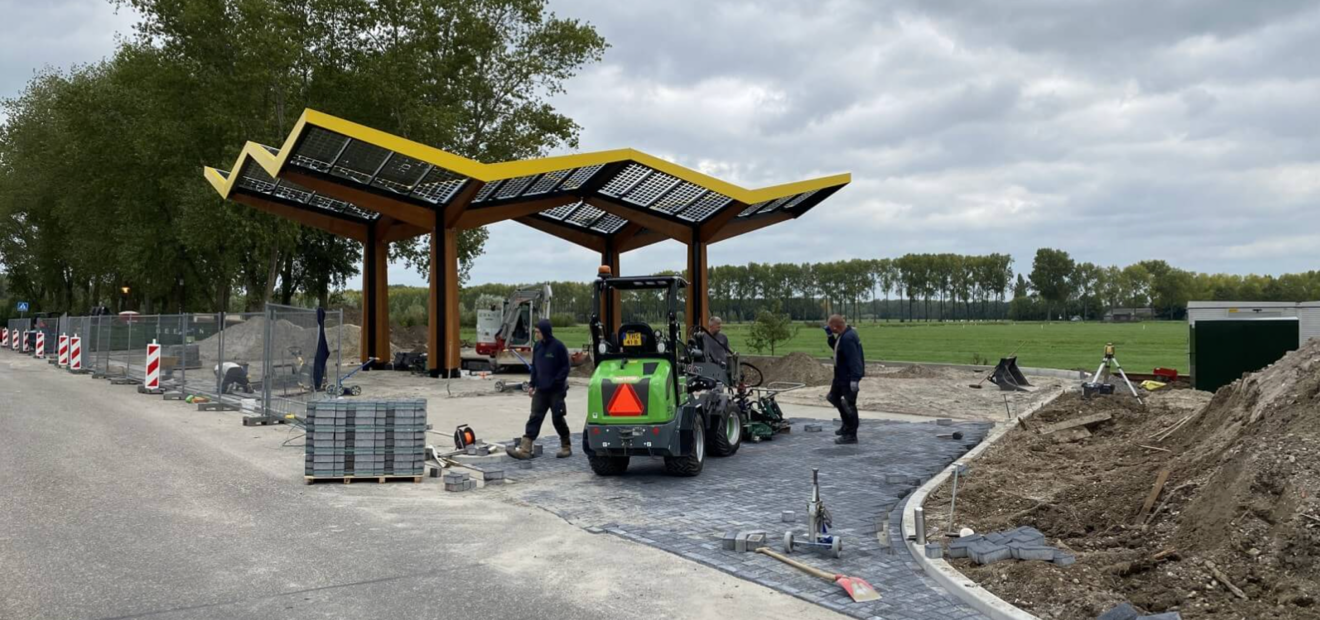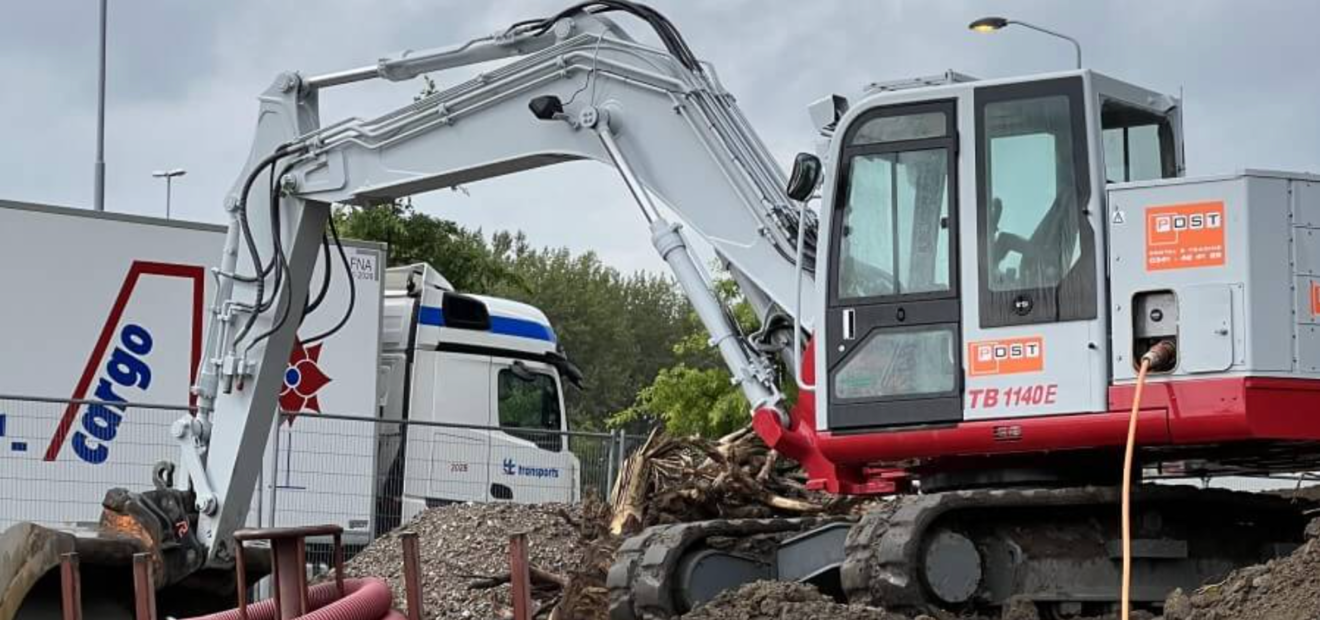How Fastned built a new station nearly emission free
Sustainable mobility is a noble goal, but it’s also crucial that we reduce emissions when building fast charging infrastructure. To this end, our newest fast charging station, opened in early 2023, was largely an emission free build.

Located at the Lingehorst service area along the A2 near Beesd, the station – with its eight charging hubs – is the first step in our vision of the emission-free construction of all our charging stations.
By using electric equipment when possible, 81.85% less nitrogen oxide (-22.1 kg NOx) and 77.15% less carbon dioxide (-6,2 ton CO2) was emitted during construction, compared to a traditionally built station of equal size. We asked an independent research company to calculate emissions using the official AERIUS calculation tool. You can find a factsheet with their results here.
Strong, silent, and sustainable
During the various construction phases, we used electrical equipment as much as possible. We worked with, among others, electric crawler excavators, wheel loaders, a rammer, a bandsaw, a vibratory plate, and aerial work platforms. A special container was set up to safely charge the electrical equipment at night.
This electric machinery is better for the environment and climate, as well as construction staff. It means no unhealthy exhaust fumes and fewer vibrations. With less noise pollution, workers can communicate better on site, and there is less impact on the immediate surroundings. In addition, most electrical machines turned out to be stronger than their traditional counterparts, due to the size and weight of the electric battery packs.

Bumps in the road
In some cases, we had to revert to traditional equipment. This was due to unexpected power failures and limited availability of machines, combined with the fast pace of construction. For instance, one of the electric crawler cranes temporarily failed to charge properly. So, to meet the tight schedule we had to use a traditional shovel.
The need to charge electric equipment on site posed another challenge. Lingehorst was suitable for the pilot as it already had a working grid connection. But this is the exception rather than the rule. It would be a welcome step if grid operators prioritise emission-free construction projects that also contribute to a more sustainable future.
Another challenge was the need to rent electrical equipment for the construction of this fast-charging station. Availability was limited and the equipment significantly more expensive than traditional alternatives. Consequently, we welcome the €60-million government subsidy announced recently for the purchase of emission-free construction machinery.

Making zero-emission construction the norm
The learnings from this first pilot are valuable for our future vision of zero-emission construction. We realise we need to monitor costs as a commercial company, while staying on track with our ambitious growth targets. To strike the right balance, we, together with our partners, are continuously looking for further improvements to the construction process.
But of course, impact comes with scale – the more builders start sharing our commitment to reducing emissions the more progress we will make. For emission-free construction to become the norm, and to get everyone on board, governments must factor this into tenders and speed up permit procedures.
Right now, stricter regulations for nitrogen seem to actually slow down these procedures in the Netherlands. We believe parties than build with low emissions and contribute to nitrogen reduction should be rewarded by speeding up of procedures, for instance to obtain the Rijkswaterstaat permits and the environmental permits for municipalities.
Fastned would like to work with the government and grid operators to see how we can jointly help speed up the transition to electric driving and building.